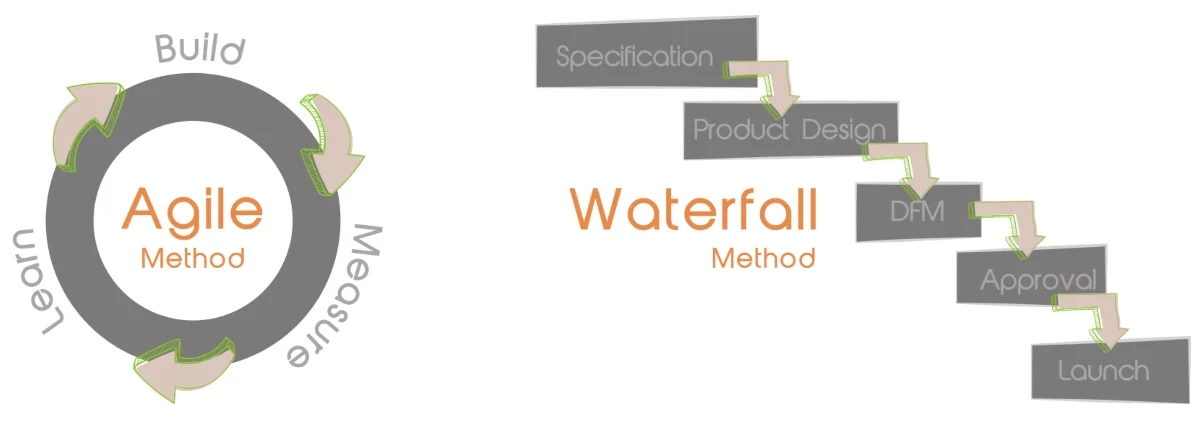Agile Layout - An Overview to Efficient and Flexible Item Production
작성자 정보
- Camilla 작성
- 작성일
본문
Intro
Agile Style supplies an adaptable, effective technique to item advancement, integrating dexterous principles with design reasoning. This strategy uses short, iterative cycles and fast individual comments to generate services that satisfy individuals' developing requirements. Agile Style is specifically reliable in a globe where market demands adjustment rapidly and products have to be user-friendly.
Defining Agile Layout
Agile Style integrates design concepts with dexterous workflows, causing products that are receptive, high-quality, and user-centered. By accepting a repetitive technique, Agile Layout permits teams to examine and improve their job, guaranteeing a close alignment with user needs.
Core Principles of Agile Style
User-Centered Reasoning: Agile Design makes sure user feedback is at the leading edge of each version. This recurring feedback process aids direct the growth of an item that lines up with individual assumptions.
Quick Prototyping: Agile Design involves creating models that can be tested and refined rapidly, stopping costly design modifications at later stages.
Cross-Disciplinary Partnership: Partnership in between various groups, such as designers, developers, and stakeholders, is crucial to Agile Layout's success.
Receptive to Modification: Agile Style motivates adaptability, adapting as market requires or customer expectations progress.
Why Agile Layout Matters
The Agile Layout procedure leads to items that much better fit users' needs, developing a competitive side. By replying to real-time comments, Agile Layout minimizes development prices and develops products that adapt to transforming demands.
How to Carry Out Agile Design
Damage down the task right into design sprints, which enables quicker modifications based on responses. Frequent testing with genuine customers guarantees the end product matters and user-focused.
 Agile Design uses an adaptable, efficient approach to product development, integrating active concepts with layout reasoning. This strategy makes use of short, repetitive cycles and fast customer feedback to generate remedies that satisfy individuals' progressing demands. Agile design tools Style is especially efficient in a globe where market demands change rapidly and items must be straightforward.
Agile Design uses an adaptable, efficient approach to product development, integrating active concepts with layout reasoning. This strategy makes use of short, repetitive cycles and fast customer feedback to generate remedies that satisfy individuals' progressing demands. Agile design tools Style is especially efficient in a globe where market demands change rapidly and items must be straightforward.
Agile Style supplies an adaptable, effective technique to item advancement, integrating dexterous principles with design reasoning. This strategy uses short, iterative cycles and fast individual comments to generate services that satisfy individuals' developing requirements. Agile Style is specifically reliable in a globe where market demands adjustment rapidly and products have to be user-friendly.
Defining Agile Layout
Agile Style integrates design concepts with dexterous workflows, causing products that are receptive, high-quality, and user-centered. By accepting a repetitive technique, Agile Layout permits teams to examine and improve their job, guaranteeing a close alignment with user needs.
Core Principles of Agile Style
User-Centered Reasoning: Agile Design makes sure user feedback is at the leading edge of each version. This recurring feedback process aids direct the growth of an item that lines up with individual assumptions.
Quick Prototyping: Agile Design involves creating models that can be tested and refined rapidly, stopping costly design modifications at later stages.
Cross-Disciplinary Partnership: Partnership in between various groups, such as designers, developers, and stakeholders, is crucial to Agile Layout's success.
Receptive to Modification: Agile Style motivates adaptability, adapting as market requires or customer expectations progress.
Why Agile Layout Matters
The Agile Layout procedure leads to items that much better fit users' needs, developing a competitive side. By replying to real-time comments, Agile Layout minimizes development prices and develops products that adapt to transforming demands.
How to Carry Out Agile Design
Damage down the task right into design sprints, which enables quicker modifications based on responses. Frequent testing with genuine customers guarantees the end product matters and user-focused.
 Agile Design uses an adaptable, efficient approach to product development, integrating active concepts with layout reasoning. This strategy makes use of short, repetitive cycles and fast customer feedback to generate remedies that satisfy individuals' progressing demands. Agile design tools Style is especially efficient in a globe where market demands change rapidly and items must be straightforward.
Agile Design uses an adaptable, efficient approach to product development, integrating active concepts with layout reasoning. This strategy makes use of short, repetitive cycles and fast customer feedback to generate remedies that satisfy individuals' progressing demands. Agile design tools Style is especially efficient in a globe where market demands change rapidly and items must be straightforward. 관련자료
-
이전
-
다음
댓글 0
등록된 댓글이 없습니다.
